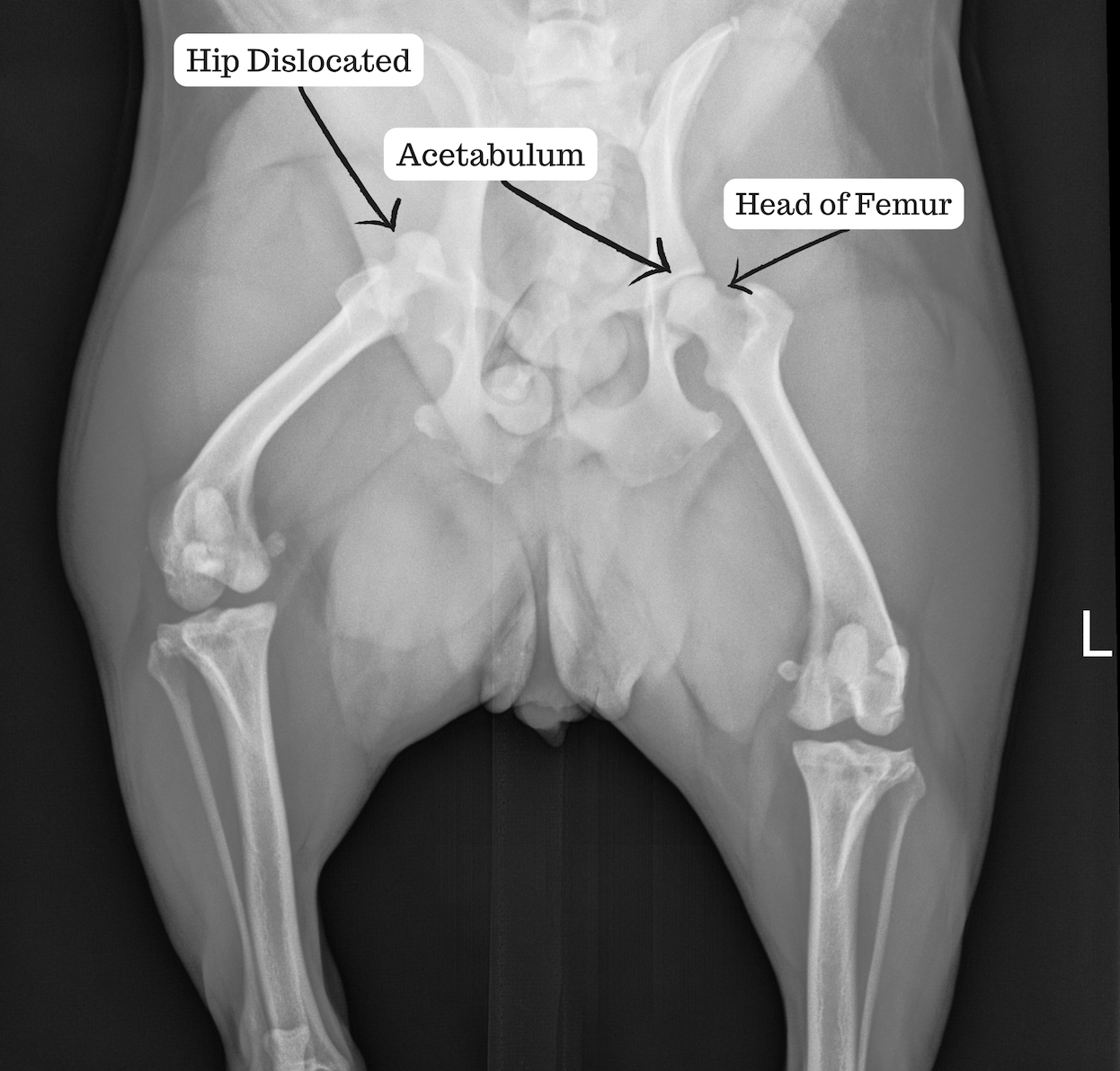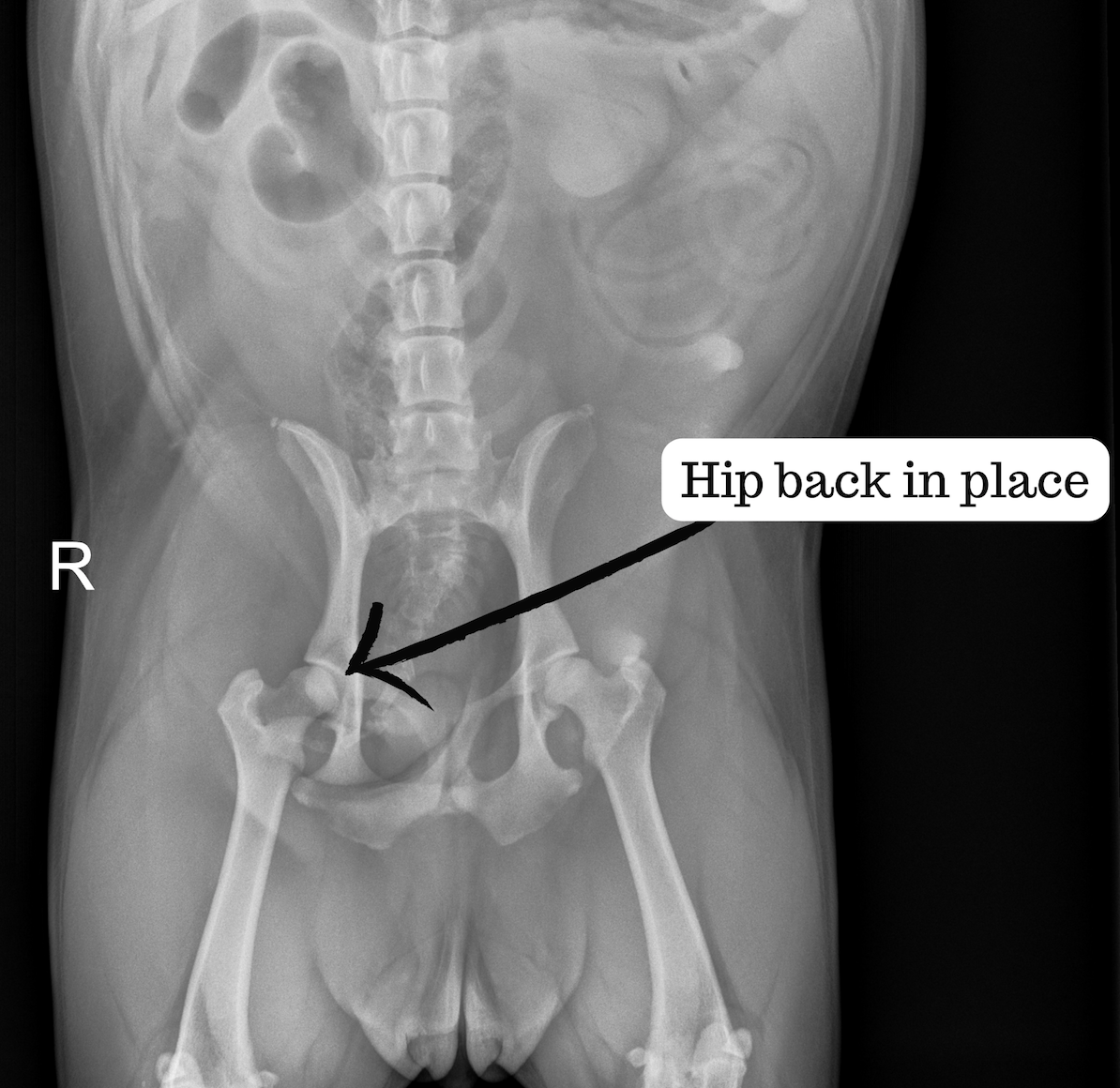The Patient
Bella, a 1 year old intact female English Bulldog, came to see me as an emergency. She had been placed in an upstairs bedroom with a sliding glass door while a lawn maintenance company was working at the home. She somehow managed to open the slider, go out onto the balcony, squeeze through the railing, and jumped off the second story balcony landing on the concrete in the backyard. Her owner was home at the time and heard her land with a thud on the ground. She immediately scooped her up and brought her to the hospital.
The Case
On examination, she was bright and alert, was not bleeding anywhere, was breathing normally, but was unable to place any weight on her back right leg. She was holding it under her body in a strange way and was refusing to stand or walk. She could stand with help and was using the left rear leg just fine, but not the right. There was no obvious external injury to the limb and she was not even acting painful when I palpated her leg. But, she was unwilling to bend it properly. I recommended taking some xrays of her hips and rear legs to determine the cause of her lameness. The xray showed that her right hip was dislocated, or luxated out of joint.

As you can see on the xray, the left hip is in the proper position with the head of the femur sitting in the acetabular cup but the right one is located in a craniodorsal position outside the acetabular cup. The hip joint is a ball and socket joint and swings freely forward and back in the joint. If out of socket, the muscles prevent the leg from moving properly. I recommended that we sedate Bella heavily in order for me to replace the leg into its proper position. This is called a "closed reduction" of a luxation. This means there is no true surgery needed; no incision is made. The sedation is necessary to relieve pain but also to relax the muscles to allow the manipulation of the joint. The owner authorized the procedure.
The Treatment Plan
I administered an injectable sedative as well as an opioid analgesic. Once Bella was fully relaxed, I was able to carefully manipulate the leg and "pop" it back into place. I took another xray to confirm proper positioning and then took the leg through a passive range of motion for about 10 minutes to fully ensure a good connection of the ball and socket and to further relax the muscles that had been out of alignment. If a joint is out of place for more than 12 hours, it is nearly impossible to replace the joint in this fashion. The longer it is out of place, the more chance that the muscles will contract in that new position and not allow for reduction. This is when an "open reduction" becomes necessary. This involves general anesthesia, a deep incision into the joint, manual replacement of the bones, or even a surgery to remove the head of the femur altogether (called an FHO). Luckily, Bella's owner had rushed her to the hospital within a matter of minutes so her leg cooperated with me. Once I was confident her leg was once again in the right place, I reversed the sedation and woke her up.
The Outcome
I instructed the owner to keep Bella confined and not allow for any running, jumping, rough housing, or stair climbing for several weeks. Once a joint is out of place, it takes time for all the soft tissues in the area to heal and there is a chance it could reluxate if she became too active. I prescribed a pain medication as well as a sedative to use as needed if she was being too rambunctious. I tried to explain to Bella that dogs don't have wings and she shouldn't be jumping off of second story balconies. I'm not sure she understood me but her owner now knows the bedroom is not a safe place for Bella, the flying dog.
The Drake Center for Veterinary Care is an AAHA-accredited animal hospital located in Encinitas, CA. The Drake Center loves being a source of information for all pet owners across the country; however, if you have any questions regarding pet care and do not live in Encinitas, CA or surrounding cities, we encourage you to contact your local veterinarian.


